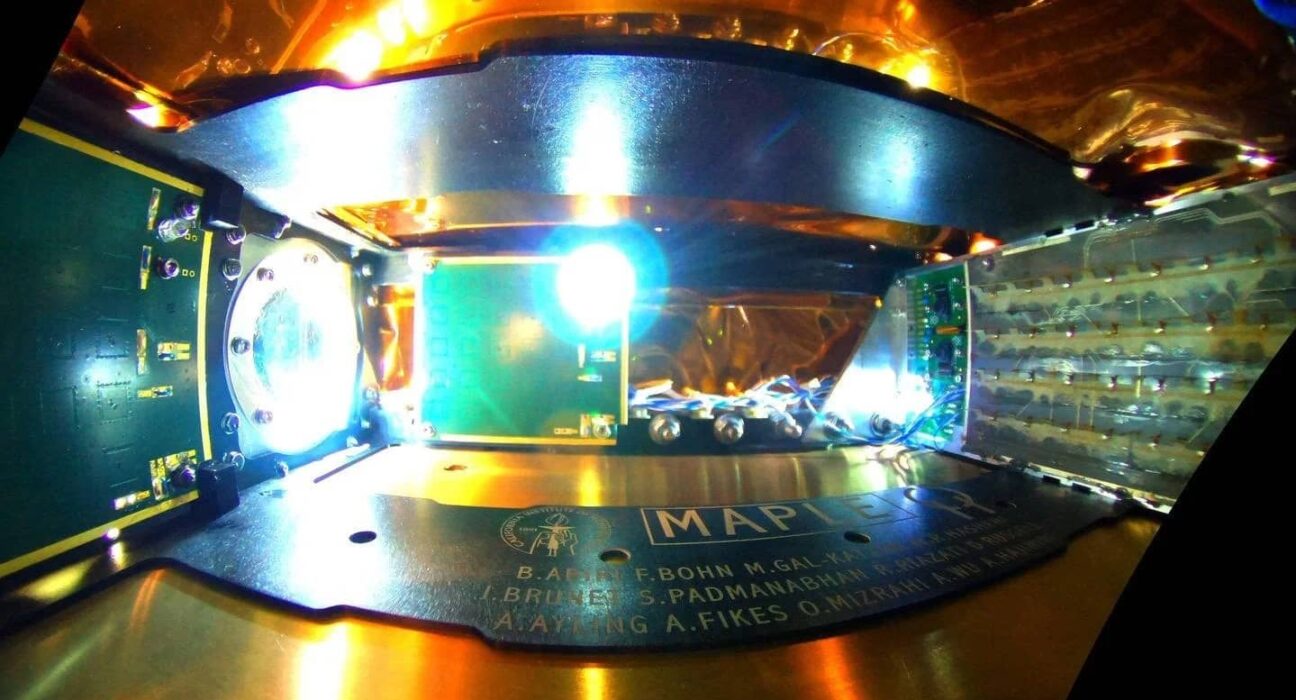Researchers from the California Institute of Technology have sent solar energy from space to Earth without using a single wire, which they claim is a first. The experiment is a part of the Space Solar Power Project at Caltech. The Microwave Array for Power-transfer Low-orbit Experiment, or MAPLE, a tiny prototype aboard the in-orbit Space Solar Power Demonstrator (SSPD-1) that launched this January, was used by the researchers to conduct the power transfer experiment.
The array of MAPLE’s transmitters, according to the researchers, successfully transmitted solar energy gathered in space via microwaves to a receiver on the roof of the Gordon and Betty Moore Laboratory of Engineering on the Caltech campus in Pasadena.
“Through the experiments we have run so far, we received confirmation that MAPLE can transmit power successfully to receivers in space,” said Space Solar Power Project co-director Ali Hajimiri in a press release. “We have also been able to program the array to direct its energy toward Earth, which we detected here at Caltech. We had, of course, tested it on Earth, but now we know that it can survive the trip to space and operate there.”
The SSPD-1 is a pair of solar power collection panels that are mounted to a Vigoride space tug from Momentus Space. That energy is sent utilizing both constructive and destructive interference by a network of transmitters inside MAPLE. Two receivers on MAPLE, one about a foot away from its transmitter, capture solar energy and transform it into DC electricity. During the experiment, this electricity was utilized to power two LEDs inside MAPLE. By adjusting the transmissions between the receivers, the researchers were able to turn on one LED at a time, proving the array’s accuracy. Additionally, MAPLE features a window that can be used to send energy from the transmitters toward an object outside the spaceship, such as Earth.
“No energy transmission infrastructure will be needed on the ground to receive this power. That means we can send energy to remote regions and areas devastated by war or natural disaster,” Hajimiri stated.
Japan intends to use it by the middle of the 2030s because of the significant implications that the capacity to wirelessly transfer solar power from space has for renewable energy. A public-private cooperation will be used to test the technology in 2025, according to a Japanese research team.
As humanity’s need for energy grows, an effective solution like space-based solar power collecting and transmission might be a big step in the right direction. Space-based power collecting would be able to run continuously, unlike ground-based solar power gathering, which must stop at night. It would also be possible to beam power to remote or disaster-affected locations, provided they have the necessary equipment.





